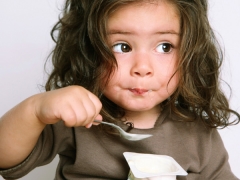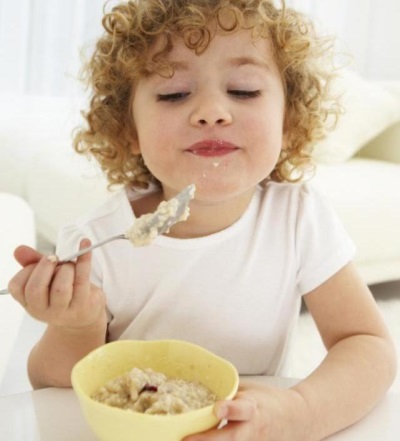Diet for dysbacteriosis in a child
condition intestinal dysbiosis It can develop at any age, but children are more susceptible to this problem, since their digestive system is more sensitive to changes in nutrition and other factors provoking diseases.
In the complex treatment of dysbacteriosis, one of the main roles is given to a proper diet, since it promotes the growth of beneficial microflora and helps to eliminate the unpleasant symptoms of the disease. What features of the diet with dysbacteriosis and how is it different for children of different ages?
Babies
The most valuable food for infant with dysbiosis is breast milk. It contributes to the restoration of the numerical advantage of lactobacilli and other beneficial microorganisms. If infant feeding is carried out with mixtures, then when identifying dysbacteriosis, food enriched in prebiotics is shown, as well as probiotic components.
Older children
In children older than one year, the change in nutrition also helps to cope with dysbacteriosis faster. Baby cook only boiled and stews, which will not further irritate the digestive tract. The diet of the child should include lactic acid products rich in lacto-and bifidobacteria. It is also very important to enter the body of the baby fiber, because its presence is very important for the development of beneficial bacteria.
The basic principles of diet for dysbacteriosis
- Meals should be organized according to the age of the child.
- From the diet of the child should be excluded dishes and foods that cause fermentation and irritate the intestines.
- Food is best given warm, so that it is better absorbed.
- The child should adjust the diet with the exception of frequent snacking.
Nutrition in the acute period of the disease
A child with dysbacteriosis manifests itself with quite pronounced symptoms of impaired digestive function can be given porridge (rice, buckwheat, oatmeal), baked apples, apple or dried fruit compotes, vegetable purees and vegetable soups, and lactic acid products that do not have sugar. Porridge can be cooked in diluted milk, but if there is a rash on the skin, porridge is cooked only in water.
After 3-5 days from the beginning of the diet, the child can begin to add lean soups to chicken, veal, rabbit, fish. These products can also be given separately in boiled form. The child is recommended low-fat cottage cheese, in which there is no sugar, as well as kefir. All products should be boiled or steamed, but you can also stew.
Give your child baked and stewed apples, because they contain a lot of pectin. Raw fruits (apples, peaches, pears, apricots and others), as well as vegetables, can be given when the baby’s stool returns to normal. At the same time, one should start with the minimum number of products and it is best to introduce them into the children's menu in the morning.
Juices from non-acidic fruit for a child must be diluted with water. Herbal tea from currant leaves, chamomile, mint, and wild rose is also recommended for drinking.
Prohibited Products
For an infant baby, such products include fruit juice, as well as sweet dishes.
Children older than one year with dysbacteriosis should not be given:
- Fried foods;
- Smoked meat;
- Greasy food;
- Whole milk;
- Mushrooms;
- Spicy dishes;
- Pickles and pickles;
- Carbonated drinks;
- Sweets;
- Vegetables with a high content of essential oils;
- Very cold dishes.
Older children are especially hard to give up sweets, so they can buy cookies and other sweets on fructose, but still give them in small quantities.










